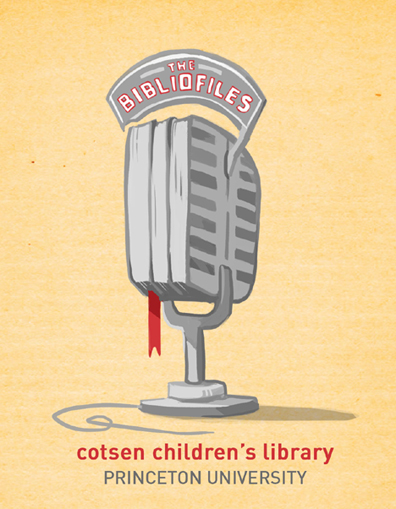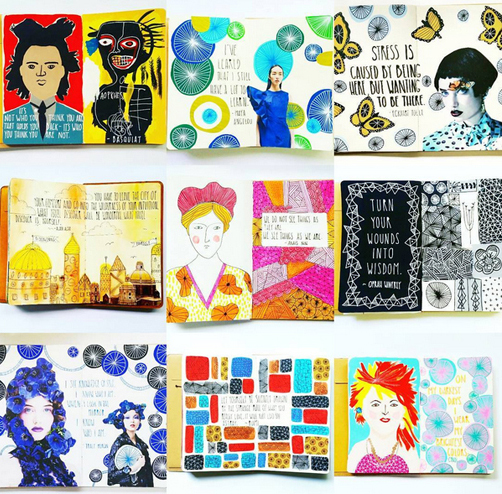 Words of wisdom, explosions of color, gorgeous layers, and playful images. You will find all of these in the work of art journalist Megan Whisner-Quinlan. What is art journaling? Basically, it’s a more formalized version of a sketchbook. The goal is to express yourself with small, complete works of art within the bound pages of a journal.
Words of wisdom, explosions of color, gorgeous layers, and playful images. You will find all of these in the work of art journalist Megan Whisner-Quinlan. What is art journaling? Basically, it’s a more formalized version of a sketchbook. The goal is to express yourself with small, complete works of art within the bound pages of a journal.
A self-taught artist, Megan recently completed an Instagram-hosted project called #the100dayproject. I asked her to share her work, and answer a few questions about her process!
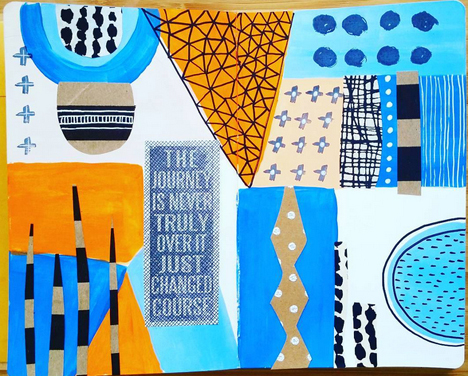
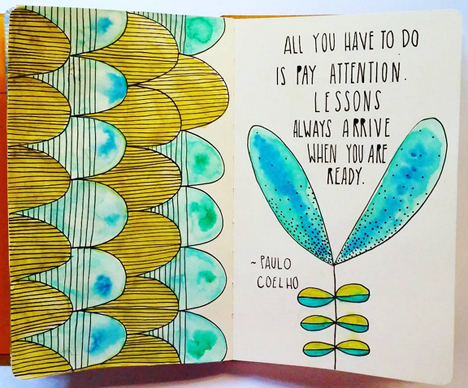 When did you first learn about art journaling?
When did you first learn about art journaling?
I learned of art journaling about 16 years ago, right around the same time I discovered book binding, as they often go hand in hand.

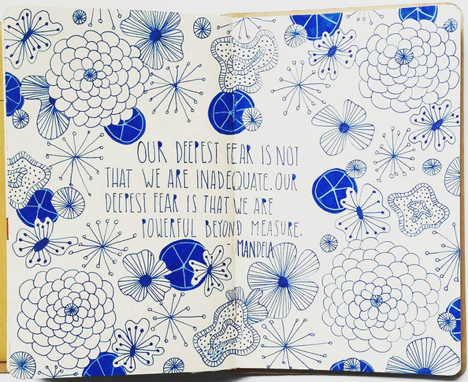 How long have you been doing it?
How long have you been doing it?
I did art journaling for about 3 years until I had children and then stopped because I was so overwhelmed with the early years of motherhood. I came back to it about 3 years ago. Initially, I was just journaling during a difficult time, but then I added some nice designs on the pages and before I knew it the art took over.
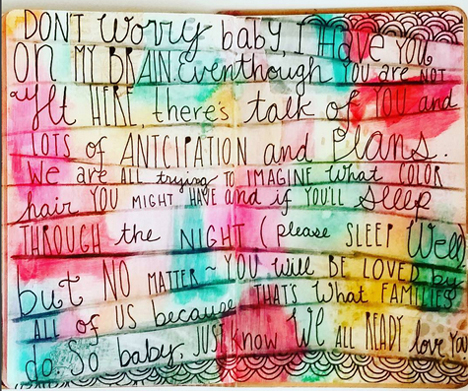
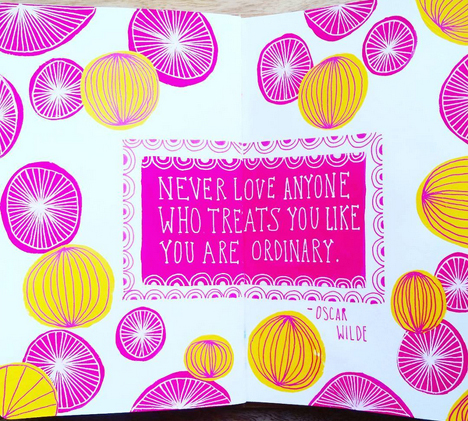 Do you lean more towards the art…or the journaling?
Do you lean more towards the art…or the journaling?
Right now I lean towards the art. It really depends on where I am in my life. Art journaling is considered an art, but a therapeutic form of art. Sometimes, I will add more writing if I want to focus on certain elements of my life. Many art journalers use a lot of positive affirmations when journaling.
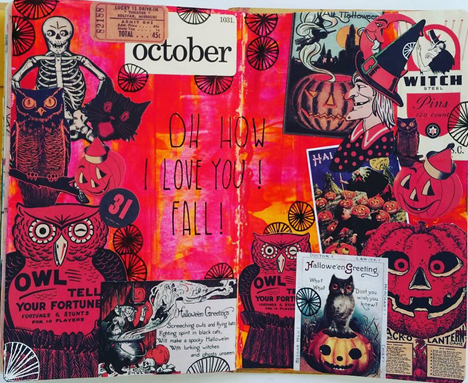
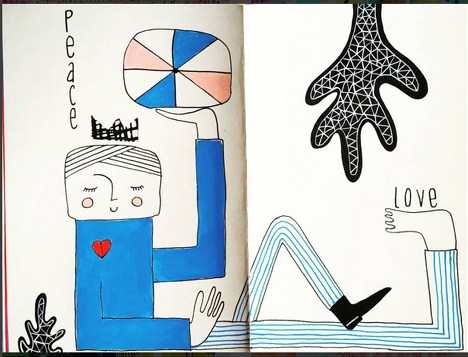 What are some of your favorite go-to supplies?
What are some of your favorite go-to supplies?
I use Ranger Ink’s Dylusions journals, paints and inks. They are specifically designed by art journalers for art journaling. I also love watercolors, watercolor pencils. and gel pens to add detail and background to my pages. I do a lot of collage as well, so used magazines are my favorite source for supplies as well.
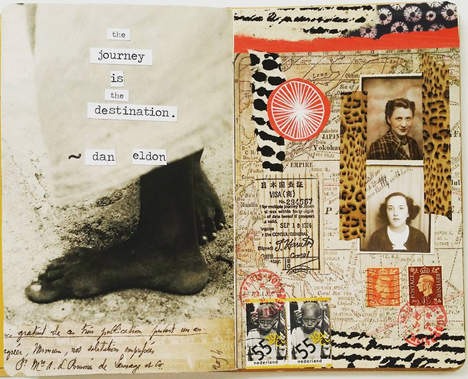
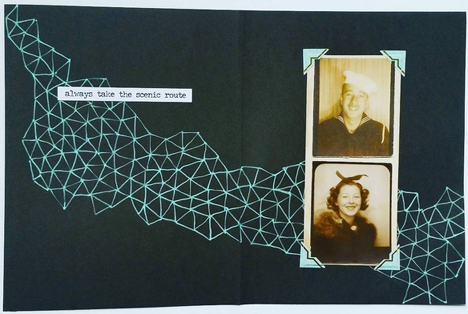 Are there any parameters to art journaling? Or is it whatever you can imagine – text, images, sketches, color washes…?
Are there any parameters to art journaling? Or is it whatever you can imagine – text, images, sketches, color washes…?
There really are no parameters to art journaling, which is why it is so great and accessible for anyone.
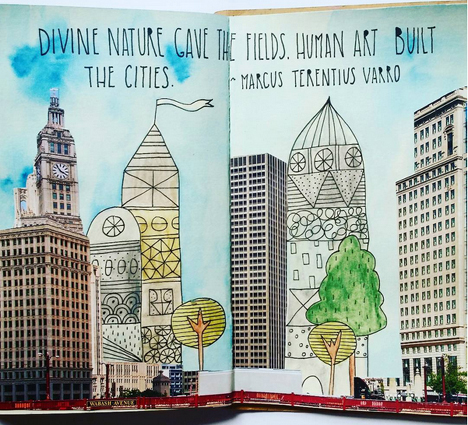
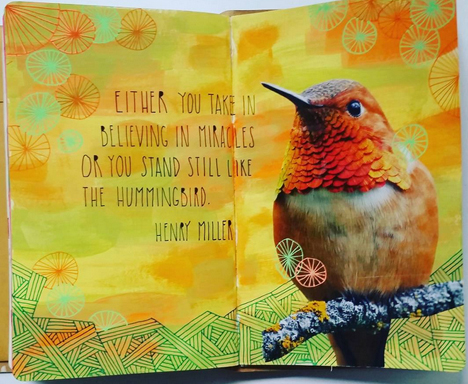 Is it difficult coming up with a concept every day?
Is it difficult coming up with a concept every day?
I almost never have any plan anytime I sit down to journal. Usually I will generate a direction from an image that is interesting and go from there. More recently I have been prepping many pages at once and just go back and forth between them each day.
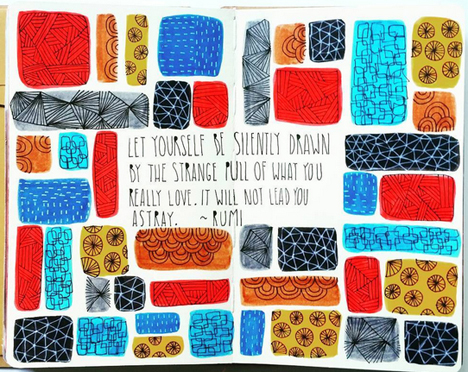
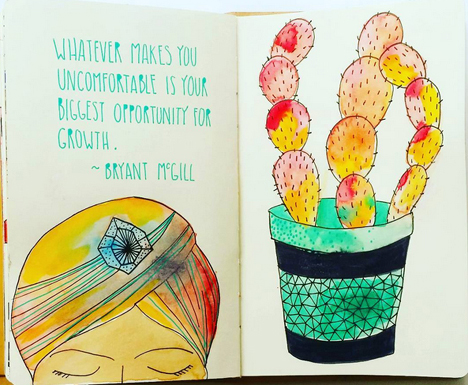 How has your journaling changed since you first started posting it on Instagram?
How has your journaling changed since you first started posting it on Instagram?
I have only been posting on Instagram since January so It hasn’t actually been too long. But as an artist, you tend to try different techniques and phases all the time. I still feel like I’m “learning” and maybe I always will, so I guess right now at least I don’t feel like I have found my niche yet.
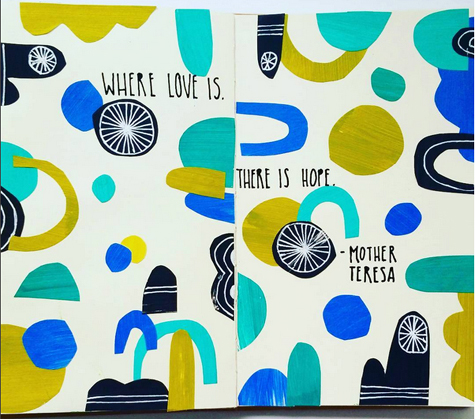
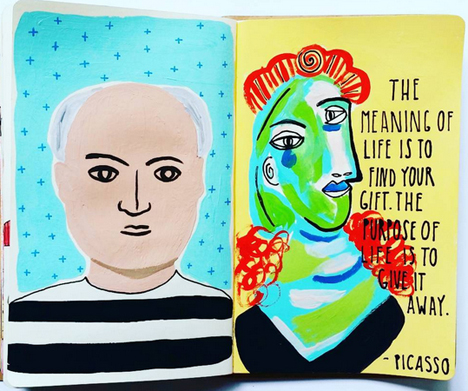 What are your top 3 favorite entries and why?
What are your top 3 favorite entries and why?
This is a tough one. I have some favorites, but more interesting to me is when you put it out into the world. You don’t know what will resonate with others. To this day I have always noticed, at least on Instagram, my favorites are often the posts that get the lowest “likes.” I love that. It is actually a comfort, because I know that I am still pleasing myself regardless of others opinions.
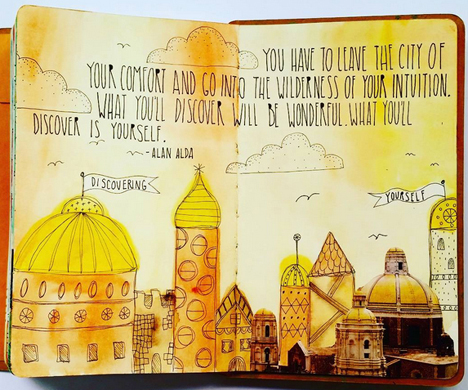
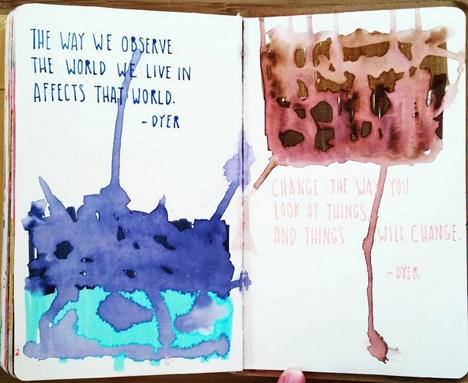 You finished your 100 day project, what are you up to next?
You finished your 100 day project, what are you up to next?
Right now I am in an “absorption” phase and am doing a lot of workshops online. I looked up one of the more known art journalers, Teesha Moore, and have been watching her videos. I recently just learned she suffered a stroke in March and is still rehabilitating. It is remarkable to see her progress, and even though she is struggling to regain control of her right hand (and speech) the art she is doing just for her recovery, is beautiful. She is such an inspiration to me, so right now, I am trying to learn as much as I can from watching her and grow even more as an artist.
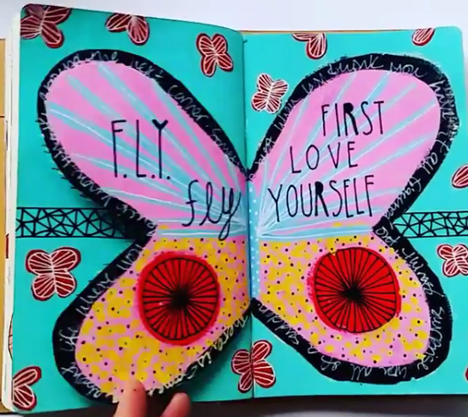
Click here to see this journal entry flutter!

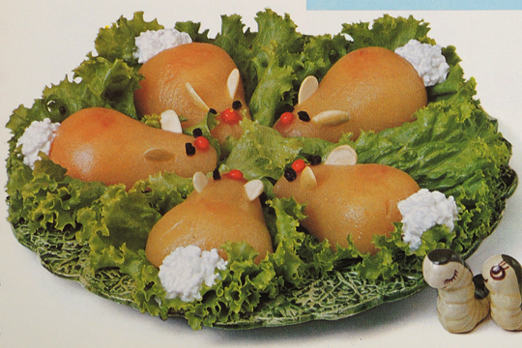 Q: What books inspired you to do the creative things you do today?
Q: What books inspired you to do the creative things you do today?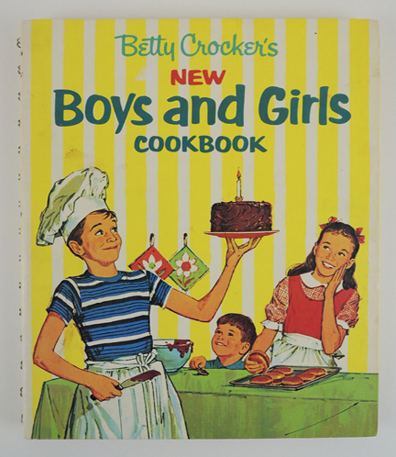 I would look at this book for hours. I would slowly flip the pages, eagerly anticipating the arrival of my favorite section. Can you guess which one it was? Yup. “Cookies, Cakes, and Other Desserts.” Here is the cake of my childhood dreams:
I would look at this book for hours. I would slowly flip the pages, eagerly anticipating the arrival of my favorite section. Can you guess which one it was? Yup. “Cookies, Cakes, and Other Desserts.” Here is the cake of my childhood dreams: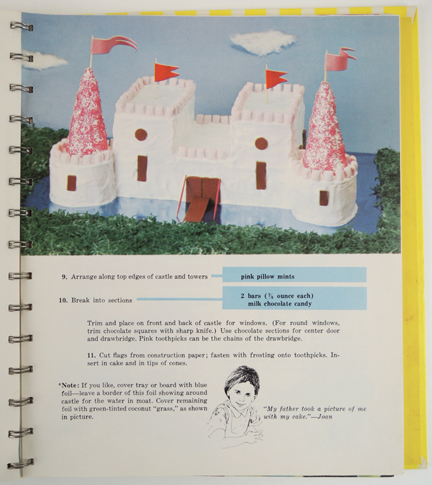 Oh where do I start? I was wholly enthusiastic about cake (and those pink pillow mints – wow, do they even make those anymore?). But even more, I loved that someone had taken food and sculpted it into something imaginative and fantastical. Then fearlessly added non-edible items (such as the toothpick drawbridge chains) to complete the picture. Also, they didn’t just photograph the cake on a table. They set the scene with grass, a shiny moat, and a blue sky with cotton ball clouds. And how about this beautiful creation…
Oh where do I start? I was wholly enthusiastic about cake (and those pink pillow mints – wow, do they even make those anymore?). But even more, I loved that someone had taken food and sculpted it into something imaginative and fantastical. Then fearlessly added non-edible items (such as the toothpick drawbridge chains) to complete the picture. Also, they didn’t just photograph the cake on a table. They set the scene with grass, a shiny moat, and a blue sky with cotton ball clouds. And how about this beautiful creation…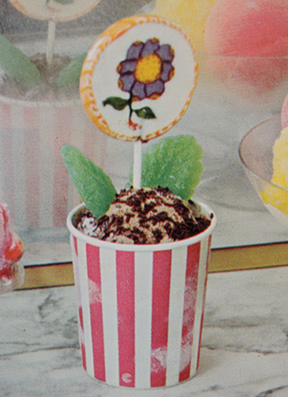 It’s an “Ice Cream Flower Pot.” A waxed paper cup, ice cream and crushed cookie “dirt,” candy leaves, and a frigging lollipop flower! You can put lollipops and ice cream together and make it look like a flower pot? My mind was officially blown.
It’s an “Ice Cream Flower Pot.” A waxed paper cup, ice cream and crushed cookie “dirt,” candy leaves, and a frigging lollipop flower! You can put lollipops and ice cream together and make it look like a flower pot? My mind was officially blown.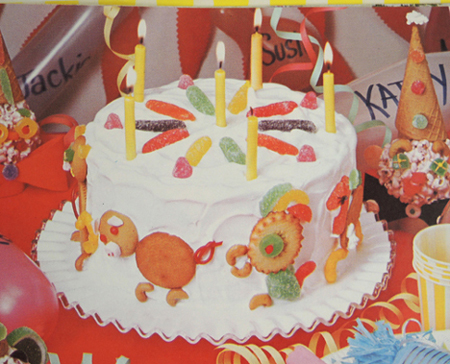 Those wild and crazy Betty Crocker bakers even used holiday-specific candy…on cakes that were totally unrelated to that particular holiday! Like candy canes on a 4th of July “Drum Cake”:
Those wild and crazy Betty Crocker bakers even used holiday-specific candy…on cakes that were totally unrelated to that particular holiday! Like candy canes on a 4th of July “Drum Cake”: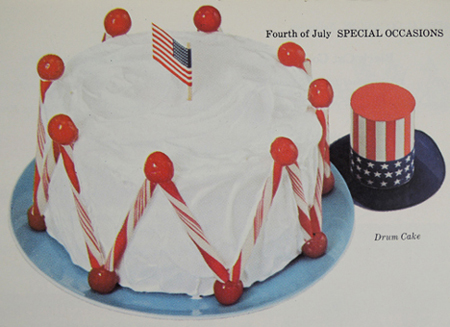 This taught me that you could look at an object, even a familiar one like a candy cane, and see it used for a different purpose or in a different context. That, my friends, is a pretty abstract lesson to be learned from a cake. I still want to eat those cherries too.
This taught me that you could look at an object, even a familiar one like a candy cane, and see it used for a different purpose or in a different context. That, my friends, is a pretty abstract lesson to be learned from a cake. I still want to eat those cherries too.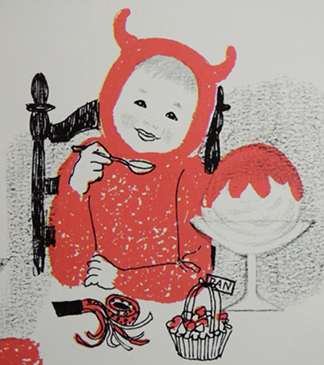 When it came time to dress my firstborn for Halloween 2009, what costume did I choose?
When it came time to dress my firstborn for Halloween 2009, what costume did I choose?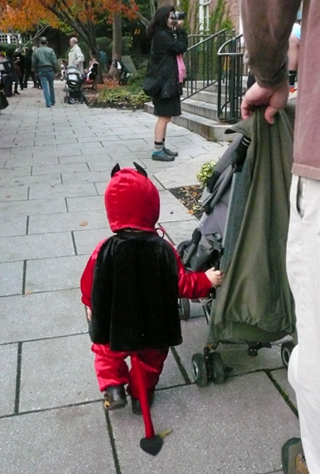 Coincidence? I don’t think so.
Coincidence? I don’t think so.